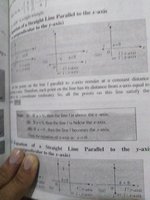

I have zero clue what to do here. At first I thought I was simply supposed to solve for the y values. Then I realized the choices don't match up at all. I've checked the answers already (2nd image) and can't seem to make sense of it. There is no explanation in the book. I'm lost on how to make any inferences. All I know is how they would look on the graph. For the first problem, both arms go down and for the 2nd problem, the left arm goes down and the right arm goes up. Can someone please explain how to get to those answers?

